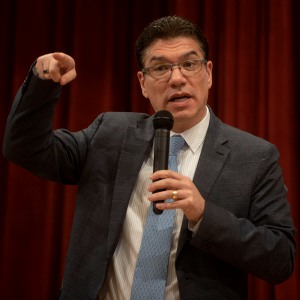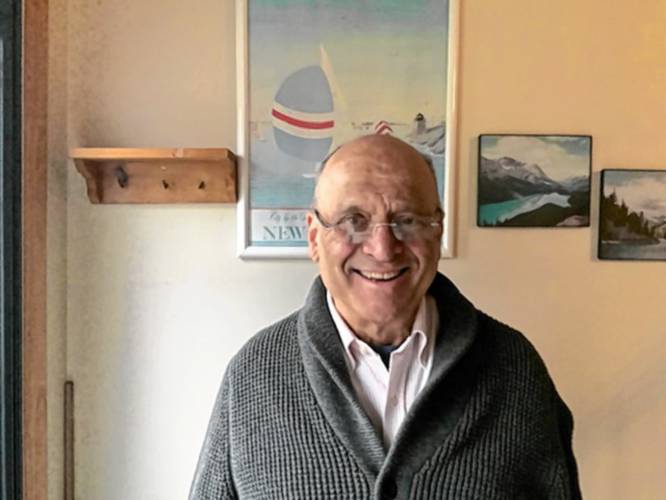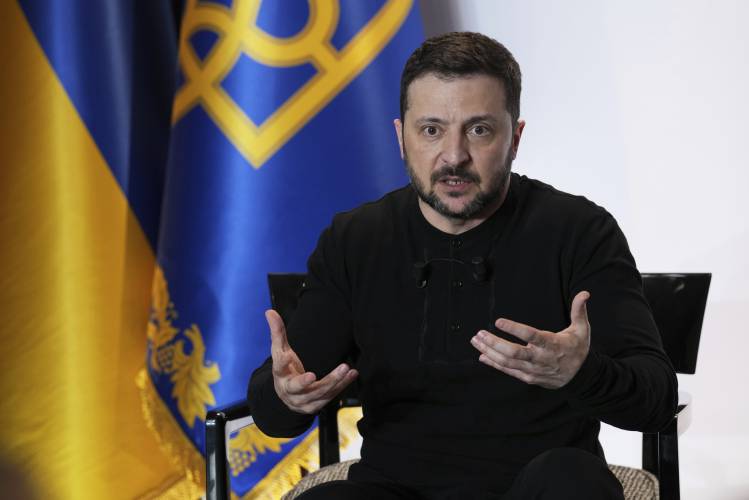Columnist Richard Fein: Ukraine — Prepared to fight but ready for peace
| Published: 03-31-2025 7:31 AM |
This column is about Ukraine in the fourth year of a war that Russia started. The president of Russia, Vladimir Putin, wants to wipe out Ukraine as an independent country with its own history and culture. Under the Biden administration, NATO was revitalized and the U.S. supported Ukraine in its hour of need. Under President Donald Trump, U.S. policy has changed.
Much of what Trump has been saying about the Ukraine war is simply not true. Volodymyr Zelenskyy is not a dictator. Zelenskyy was elected president and currently has a 62% approval rating. There have been no recent elections because the Ukrainian constitution forbids elections in wartime.
Trump has said that the U.S. has provided Ukraine with $350 billion in aid. The actual amount is $130 billion to $183 billion, depending on what is included. Europe has given $166 billion. Contrary to Trump, Zelenskyy has praised and thanked the U.S. for its assistance many times. Ukraine has in fact been open to diplomacy even before this war started and has agreed to a 30-day total ceasefire requested by Trump.
Russia has accepted only a ceasefire limited in scope. Trump has blamed Ukraine for starting this war. That’s blaming the victim of aggression for being attacked.
Russia controls about 20% of Ukrainian territory and is making slow progress westward along a 600-mile front line. According to the Institute for the Study of War, at this rate it would take Russia 83 years to conquer all of Ukraine’s territory. This has come at a tremendous cost. According to the British Ministry of Defense, Russia has suffered about 900,000 soldiers dead or wounded.
Ukraine had a prewar population of 41 million. According to the U.N., about 6.4 million are now refugees in Europe and 560,000 are refugees elsewhere. Military causalities have been estimated at 300,000 dead and wounded.
Ukraine has built up its own defense industry. Drones are now the single most lethal weapon in this war, inflicting 70% of combat causalities. Ukraine is manufacturing combat drones that are among the most advanced in the world. It also is developing a long-range cruise missile that has already destroyed an oil refinery 1,000 kilometers inside Russian territory.
After a contentious Oval Office meeting with Zelenskyy, Trump suspended the supply of American weapons, intelligence sharing and vital communications. The latter two actions had an adverse impact on Ukraine immediately, with the Ukrainian military reporting hundreds of casualties in the first day. Trump has since resumed arms shipments and intelligence sharing with Ukraine.
Article continues after...
Yesterday's Most Read Articles
 Nearly all of South Hadley High’s student body holds ‘walkout to walk-in’ rally to oppose cuts, call for funding reform
Nearly all of South Hadley High’s student body holds ‘walkout to walk-in’ rally to oppose cuts, call for funding reform
 Northampton schools probe staff response to student’s unfulfilled IEP
Northampton schools probe staff response to student’s unfulfilled IEP
 UMass basketball: Minutemen land Florida Tech transfer Donovan Brown
UMass basketball: Minutemen land Florida Tech transfer Donovan Brown
 UMass Chancellor Reyes outlines changes amid financial uncertainty under Trump administration
UMass Chancellor Reyes outlines changes amid financial uncertainty under Trump administration
 Northampton Housing Authority boss placed on leave
Northampton Housing Authority boss placed on leave
 Four Red Fire Farm workers arrested as part of ICE operation in Springfield
Four Red Fire Farm workers arrested as part of ICE operation in Springfield
The countries in the NATO alliance, led by Britain and France, are staying aligned with Ukraine. They have been increasing their defense spending and weapons production capability. That is especially true of Poland and the three Baltic states because they are the most immediately threatened by Russia.
There is currently under discussion a plan to have British or French troops stationed in Ukraine to guarantee that country’s security.
Negotiations for a 30-day partial ceasefire covering just shipping and energy targets began on March 24 in Saudi Arabia. There are at least two critical unknowns: First, will the NATO countries have both the will and the capability to help Ukraine negotiate with Russia from a position of strength? A second unknown is how much Trump will influence the outcome by threatening Ukraine with a cutoff of military aid or ending U.S. economic sanctions against Russia.
If the ceasefire negotiators discuss broader issues, Russia’s demands are likely to be: Ukraine must concede its territorial losses to Russia, never join NATO, sharply reduce the size of its army and hold elections rigged to replace Zelenskyy with a president more accommodating to Russia.
For its part, Ukraine will insist on the right to build and retain a military force capable of deterring future aggression from Russia. It will probably seek a complete exchange of POWs and the return of children kidnapped and adopted by Russian families.
Ukraine will not formally concede the loss of territory to Russia. Instead, it will state that Ukraine will seek any changes in the ceasefire lines by peaceful means only. Ukraine will not press the issue of NATO membership but will want to leave open the option of joining the European Union.
Even if a 30-day ceasefire agreement is reached, it is far from certain that Ukraine and Russia will subsequently reach a long-term agreement that ends the fighting completely.
Ukraine has fought bravely for more than three years and has shed a great deal of blood , both military and civilian. It needs to be realistic and make some concessions. However, Ukraine’s political independence and cultural heritage are at stake. Ukraine will not accept any agreement if the terms are Ukraine’s destruction.
Richard Fein holds a master’s degree in political science and an MBA in economics. He can be reached at columnist@gazettenet.com.








 E. Lary Grossman: Vote to remove housing authority board member ‘foolish’
E. Lary Grossman: Vote to remove housing authority board member ‘foolish’ Columnist J.M. Sorrell: The official language
Columnist J.M. Sorrell: The official language Guest columnist Kristin DeBoer: Let’s stand together for the valley you love
Guest columnist Kristin DeBoer: Let’s stand together for the valley you love George W. Kriebel Jr.: Cruelty in the name of efficiency
George W. Kriebel Jr.: Cruelty in the name of efficiency
